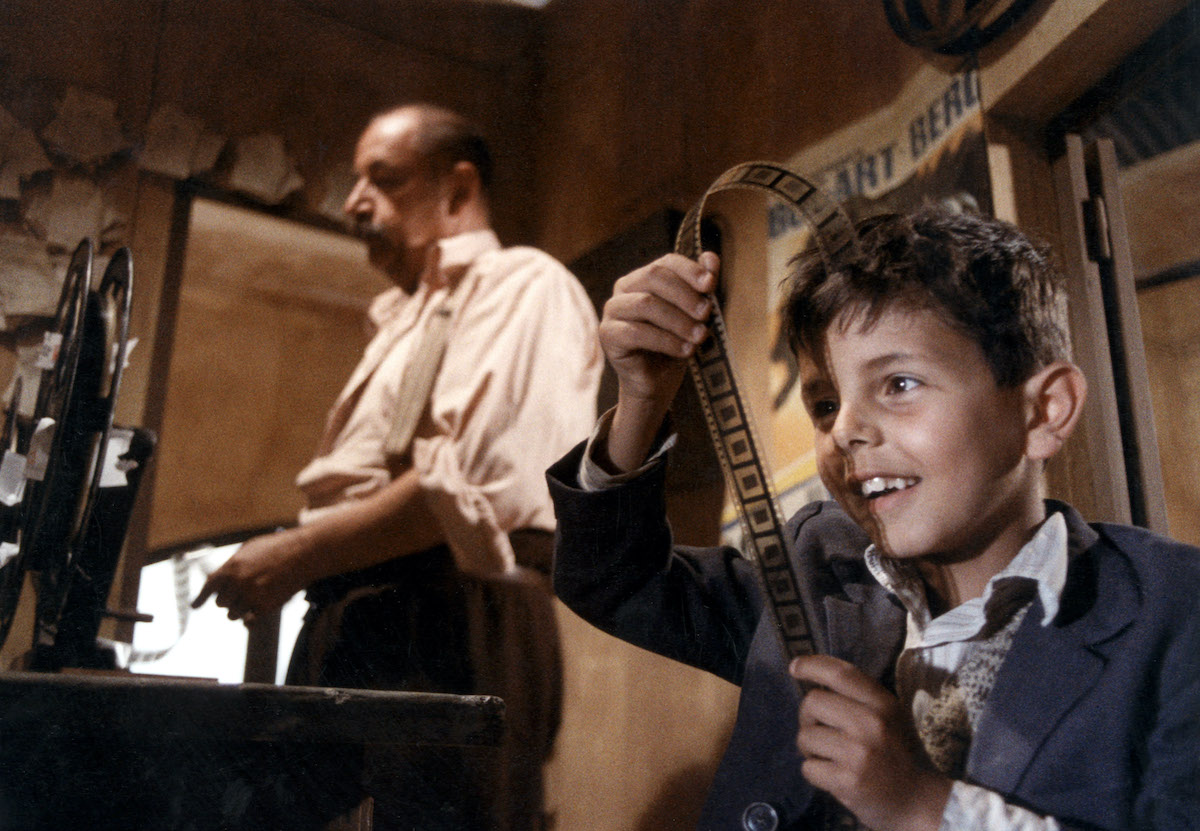‘Cinema Paradiso,’ directed by Giuseppe Tornatore, stands as an enduring celebration of cinema’s magical influence. Produced in 1988, this Italian masterpiece has etched its legacy into the hearts of global audiences, resonating far beyond its time and place of origin. At its core, ‘Cinema Paradiso’ is more than a nostalgic coming-of-age story; it is a profound homage to the art of filmmaking, emphasizing cinema’s power to shape lives, evoke emotion, and encapsulate memories.
The Framework of Metafilm: Film as a Protagonist and Driving Force
Central to ‘Cinema Paradiso’ is the famed projectionist, Alfredo, and his pupil, Salvatore, known as Toto. The narrative traverses several decades, with the Cinema Paradiso theater acting as both a literal and metaphorical heart of the town. Rather than serving as mere backdrop, the cinema itself emerges as a character, integral to the community and the protagonist’s identity.
The theater becomes a place of gathering where societal boundaries dissolve. In scenes both raucous and intimate, villagers from disparate backgrounds congregate, united in laughter, tears, and collective awe before the flickering silver screen. Through this, Tornatore underscores the communal, unifying prowess of film, transforming viewing into a ritual that transcends generational and social divides.
Film as Memory: The Emotional Core of Nostalgia
Cinema Paradiso intricately intertwines recollection and yearning, using the methods of filmmaking to summon a sense of nostalgia for both Toto and the viewers. From the opening scenes that show Salvatore as a successful director troubled by his past, to the repeated theme of vintage film reels and celluloid, the process of recalling is equated with the experience of watching movies. The movie’s shifts in time—between Toto’s younger years, teenage days, and adult life—resemble how cinema frequently revisits and recontextualizes events, safeguarding them from the decay of time.
A pivotal example is the film’s closing montage, a collection of censored romantic scenes Alfredo had preserved for Toto. This montage operates as an artistic statement; it is both a gift and an act of reclamation, restoring lost kisses and passion to public memory. Such scenes reinforce film as a vessel for emotion that survives even when physical spaces like the cinema itself fade away or are destroyed.
Technical Homage: Crafting a Lyrical Cinematic Language
Technically, ‘Cinema Paradiso’ is informed by and reverent of classic film idioms. Tornatore imbues the visual storytelling with elements reminiscent of Italian neorealism, employing naturalistic performances and authentic settings. The technical craftsmanship—from Ennio Morricone’s lush, evocative score to the warm, sepia-toned cinematography—serves as a nod to cinema’s history and its profound sensory impact.
Furthermore, the narrative is embedded with a theme of a film inside a film, nodding to masterpieces by filmmakers such as Visconti and Chaplin. Scenes from these movies are displayed on the Paradiso’s screen, providing both a visual lesson and a heartfelt nod to the extensive film tradition. This use of intertextuality anchors the tale in the collective legacy of cinema, honoring the craft of filmmaking and encouraging audiences to engage in a common cultural reminiscence.
Mentorship and Transmission: The Projectionist’s Role
One of the movie’s most profound aspects is its reflection on guidance and the conveyance of affection for cinema. The bond between Alfredo and Toto illustrates the sharing of expertise, enthusiasm, and admiration for movies. By instructing Toto on the complexities of projection—and implicitly, the art of storytelling—Alfredo serves both as an artisan and a thinker. He shares insights that go beyond the technical, promoting exploration, bravery, and self-development.
This dynamic mirrors the way film history itself is preserved and passed to new generations. Just as Toto inherits Alfredo’s passion and ultimately surpasses him, so too does cinematic tradition constantly renew itself through fresh eyes and evolving technologies.
Socio-Political Undercurrents: Censorship and Liberation
The film also intricately explores themes of censorship. Alfredo is instructed by the town priest to delete scenes deemed improper, especially any depicting romance or sensuality. This recurring act of excision offers commentary on the ways institutions seek to control narrative and emotion, yet passion finds a way to reassert itself. The return of the excised scenes in the finale reveals cinema’s radical potential to preserve truth, feeling, and rebellious joy.
By emphasizing these limitations—along with the freeing communal experience of attending movies—’Cinema Paradiso’ remarks on film as both a mirror of society and a gentle driver of cultural change. The process of viewing, it implies, can be transformative, providing views of different realms and emotional insights that might otherwise be out of reach.
Global Impact and Heritage
The international reception of ‘Cinema Paradiso’ underscores its universal message. The film achieved critical acclaim, winning the Academy Award for Best Foreign Language Film in 1990 as well as the Grand Prix at the Cannes Film Festival. Its impact is evident in later works; directors such as Alfonso Cuarón cite it as an influence, and its structure is echoed in films exploring memory, nostalgia, and the formative power of art.
By blending intimate storytelling with a grand narrative about cinema’s capacity to connect and heal, ‘Cinema Paradiso’ appeals across cultures and generations. Its reverence for film is not merely thematic but embedded in its very form and structure, inviting audiences everywhere to rediscover the magic of moviegoing—the laughter, the heartbreak, and the fleeting moments of transcendence shared in darkness before the glow of light and shadow.
The movie consequently stands as a rich homage, not only to films as a form of art but also to films as shared experiences, places of education, and reflections of human yearning. With this endearing and intricate perspective, ‘Cinema Paradiso’ transforms into the narrative of cinema: a vibrant collection of dreams, ambitions, and the strength of visual narration itself.

